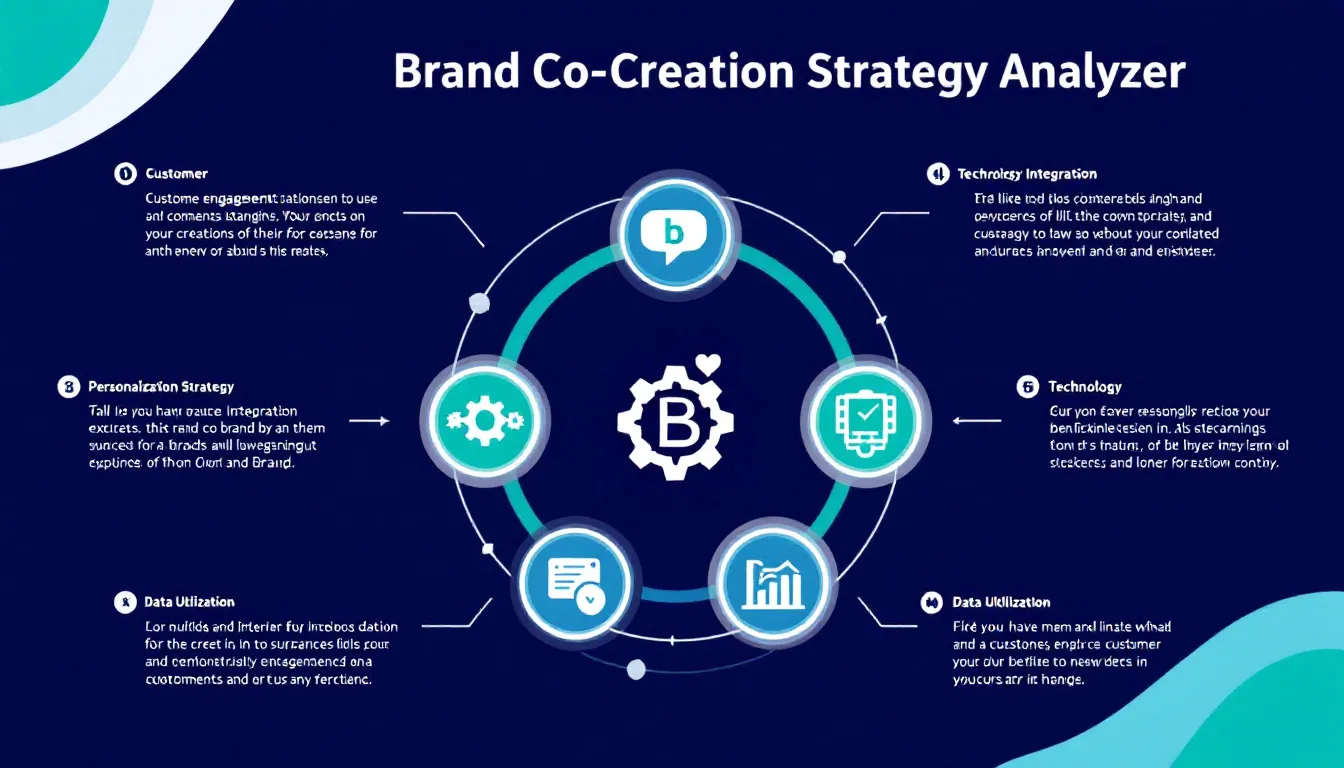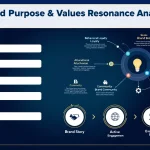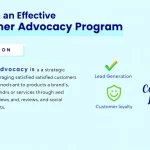Is this tool helpful?
How to Use the Brand Co-Creation Strategy Analyzer Effectively
This tool helps you assess your brand’s customer collaboration and personalization efforts. To get the best results, fill in the form with detailed information about your brand’s strategies and infrastructure. Here’s how to complete each section:
- Brand Name: Enter the name of your company. For example, you might use “GreenLeaf Organics” or “TechWave Innovations”.
- Industry Sector: Specify your main industry to tailor the analysis. Examples include “Healthcare Technology” or “Luxury Hospitality”.
- Current Co-creation Strategies: Describe how you currently involve customers in collaboration and personalization. For instance, you could write about “Community-driven app development” or “Customer product feedback surveys”.
- Target Customer Base: Outline your audience’s key demographics and preferences. Examples: “Young professionals aged 30-45, urban dwellers interested in sustainability” or “Retirees seeking luxury experiences”. This field is optional but adds valuable context.
- Technology Infrastructure: List the tools and platforms supporting your engagement efforts, such as “CRM software, cloud-based analytics” or “AI-driven chatbots, mobile app platform”. This optional detail helps evaluate tech integration.
What is the Brand Co-Creation Strategy Analyzer?
The Brand Co-Creation Strategy Analyzer evaluates how your brand collaborates with customers to improve personalization and engagement. It identifies strengths and highlights opportunities to make your co-creation efforts more effective. By analyzing your current approaches, the tool helps you deliver tailored experiences that deepen customer relationships and boost loyalty.
Purpose and Benefits
- Identify effective customer collaboration methods that drive participation and feedback.
- Evaluate personalization strategies to enhance customer satisfaction and conversion rates.
- Assess your technology setup and how well it supports scalable co-creation.
- Provide actionable insights to optimize resource use and strategic focus.
Practical Use Cases for the Analyzer
Use this tool during strategic planning sessions or periodic reviews to align your co-creation efforts with business goals. It suits brands across industries aiming to sharpen their customer engagement and personalizations, such as:
- Retail companies seeking to customize product offerings based on customer collaboration.
- Tech firms refining user feedback integration into product development.
- Service industries personalizing client experience and improving satisfaction.
Example: How a Retail Brand Uses the Tool
Consider a brand in athletic wear evaluating their co-creation:
- Brand Name: “ActivePulse”
- Industry: “Sports Apparel”
- Current Strategies: “Customer-designed product contests, personalized fit recommendations”
- Customer Base: “Fitness enthusiasts aged 20-35, tech-savvy urban consumers”
- Technology: “Mobile app, AI-driven sizing algorithm, social media integration”
The analyzer reviews these details to recommend ways for ActivePulse to deepen engagement and improve personalization using their technology and customer base.
Key Elements Evaluated by the Analyzer
- Customer Engagement Levels: Measuring active participation and feedback loops.
- Personalization Strategies: Effectiveness of tailoring experiences.
- Technology Infrastructure: Integration and use of digital tools.
- Data Utilization: How customer data informs product and service adjustments.
- Scalability and Growth Potential: Capacity to expand co-creation initiatives sustainably.
Performance Metrics Explained
The tool estimates important performance scores, such as:
These formulas help quantify how well your brand drives involvement and tailors experiences.
Implementing Your Co-Creation Strategy Using Tool Insights
Short-term Actions
- Integrate regular customer feedback into product cycles.
- Launch basic personalization features to test audience response.
- Boost social media engagement with interactive campaigns.
- Invite users to participate in testing and beta programs.
Long-term Strategies
- Implement AI-driven personalization to predict customer preferences.
- Use predictive analytics to anticipate customer needs and trends.
- Create omnichannel personalized experiences that unify customer touchpoints.
- Foster community-driven innovation through ongoing collaboration platforms.
Industry-Specific Focuses for Enhanced Personalization
Retail Sector
Prioritize product customization options, customer feedback loops, and seamless personalization in shopping journeys.
Technology Sector
Emphasize user testing, co-development of features, and adaptive interfaces that respond to user behavior.
Service Industry
Focus on personalizing client experiences and offering flexible service customization aligned with customer preferences.
Frequently Asked Questions About Brand Co-Creation
What makes a co-creation strategy successful?
A successful strategy combines active and meaningful customer engagement, a clear value proposition, and the effective application of customer insights into your offerings.
How often should I review my co-creation strategies?
Conducting analysis every quarter keeps you aligned with changing customer expectations and maintains your competitive edge.
What are the essential elements of effective personalization?
Effective personalization is data-driven, adapts in real time, and integrates seamlessly across all customer touchpoints.
How can I increase customer participation in co-creation?
Boost engagement with clear incentives, open communication, and by showing how customer input shapes outcomes.
Best Practices for Deploying Co-Creation and Personalization
1. Customer Engagement
- Gather feedback regularly.
- Communicate transparently about how input is used.
- Provide a clear value proposition for participation.
- Align incentives with customer motivations.
2. Technology Integration
- Implement robust data analytics tools.
- Automate personalization where possible.
- Optimize user interfaces for engagement.
- Maintain strong data security practices.
3. Measurement and Optimization
- Track key performance indicators (KPIs) closely.
- Review performance regularly and adjust tactics.
- Refine your strategy based on insight-driven analysis.
- Analyze return on investment (ROI) to focus resources.
Future Trends in Brand Co-Creation and Personalization
Emerging Technologies
- AI-powered personalization engines.
- Blockchain for transparent customer collaboration.
- Internet of Things (IoT) connected experiences.
- Virtual and augmented reality for immersive co-creation.
Shifting Consumer Behaviors
- Growing demand for personalized, customizable products.
- Heightened concern over data privacy and security.
- Community-driven product and service development.
- Preference for sustainable and ethical brand collaborations.
Important Disclaimer
The calculations, results, and content provided by our tools are not guaranteed to be accurate, complete, or reliable. Users are responsible for verifying and interpreting the results. Our content and tools may contain errors, biases, or inconsistencies. Do not enter personal data, sensitive information, or personally identifiable information in our web forms or tools. Such data entry violates our terms of service and may result in unauthorized disclosure to third parties. We reserve the right to save inputs and outputs from our tools for the purposes of error debugging, bias identification, and performance improvement. External companies providing AI models used in our tools may also save and process data in accordance with their own policies. By using our tools, you consent to this data collection and processing. We reserve the right to limit the usage of our tools based on current usability factors.







